I Could Pee On This!
Francesco Marciuliano
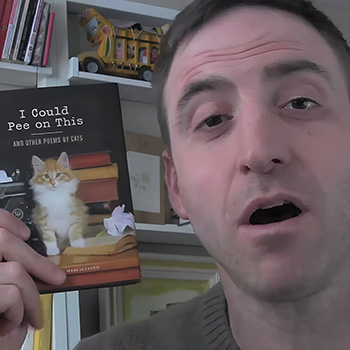 Our special guest is Francesco Marciuliano. He's the author of the Sally Forth comic strip that runs in over 700 newspapers, as well as a series of pet poetry that he says he transcribed from his cat. Not bad for a kid that had a "Bucket List" at 10 years old. He tells us he has completed most of the items on his list, except for attending a Jedi Academy. You'll laugh until you hurt!
Our special guest is Francesco Marciuliano. He's the author of the Sally Forth comic strip that runs in over 700 newspapers, as well as a series of pet poetry that he says he transcribed from his cat. Not bad for a kid that had a "Bucket List" at 10 years old. He tells us he has completed most of the items on his list, except for attending a Jedi Academy. You'll laugh until you hurt!
Marciuliano assumed writing duties for Sally Forth in 1997 after the strip's creator Greg Howard retired. Since then, he has introduced several regular-appearing characters to the comic including daughter Hilary's friends Faye and Nona, Sally's mom Laura and sister Jackie, along with husband Ted's parents and brothers. Marciuliano has also received praise for his depiction of the breakout character of Ted Forth, a strategic sourcing professional who is married to the strip's title character and has changed significantly under his writing duties.
So, just how long does it take Marciuliano to write a cartoon? Does he even get dressed or does he write in his pajamas? Marciuliano says he does most of his writing while walking in the city. He walks about 6 to 8 miles a day, which makes him sound like a fugitive who happens to have a return address. He says he hears voices in his head and just wanders the city aimlessly!
He tells us that sometimes when he doesn't have an idea, a deadline can inspire him! But then there are other times when he comes up with an idea that he can run with for about 6 weeks.
When asked who was his muse for the character Ted Forth, Marciuliano states that Ted would be his avatar. Ted is actually his inner child that completely broke through his sternum and took complete control of his life.
 "I Could Pee on This and Other Poems by Cats," was Marciuliano's first attempt at humorous pet poetry, which is a collection of poetry supposedly written by cats. The book became a New York Times bestseller and appeared on the Los Angeles Times bestseller list.
"I Could Pee on This and Other Poems by Cats," was Marciuliano's first attempt at humorous pet poetry, which is a collection of poetry supposedly written by cats. The book became a New York Times bestseller and appeared on the Los Angeles Times bestseller list.
It was because of Marciuliano's own cats that he started his pet poetry series. He said they would wake him up at 3:00 in the morning if they had ideas and would whisper the ideas into his ears. Of course, this was also tied in to them also demanding food. Who knew that cats could be so spiritual and would write poetry? But Marciuliano tells us that cats can stare at something for hours on end and that's when they get reflective and think about things, but then they can only concentrate for a certain amount of time. So, you're only going to get about 10 lines from them at a time.
Marciuliano's second book in the series, "I Could Chew on This and Other Poems by Dogs," featuring poetry in the voice of dogs also appeared on several national bestseller lists. Marciuliano tells us it is a little different when trying to get dogs to write poetry. You have to stand on the other side of the computer and repeatedly say, "You're a good dog, you're a very good dog!" You have to give them constant praise and snacks.
An English major who is from Long Island, Francesco's path is a unique one, full of witty humor and valuable advice, especially to an animal loving audience.
Visit Website
Annual Americas Favorite Veterinarian Contest
Brittany Coleman, AVMF
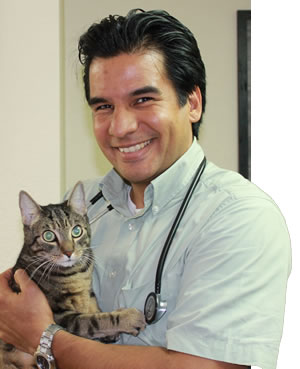 The American Veterinary Medical Foundation (AVMF) is seeking nominations for the Annual America's Favorite Veterinarian, a nationwide search to identify and celebrate extraordinary veterinary professionals. This contest is open to veterinarians practicing in all areas of veterinary medicine from private practice to public health, agriculture to academia.
The American Veterinary Medical Foundation (AVMF) is seeking nominations for the Annual America's Favorite Veterinarian, a nationwide search to identify and celebrate extraordinary veterinary professionals. This contest is open to veterinarians practicing in all areas of veterinary medicine from private practice to public health, agriculture to academia.
America's Favorite Veterinarian honors and recognizes those entrusted to preserve and protect the health and well-being of our animals. The contest celebrates the special relationships pet owners share with their veterinarians and also spotlights the other pivotal roles veterinarians' play in society as medical professionals in research labs, public health, government services and academia.
Veterinarians will be evaluated on their community involvement, ethical behavior, passion for the profession and their connections to animals and their owners. Nominations can come from their client or colleagues.
A question you should ask yourself before making a nomination is do you like your veterinarian so much that you wish they would see human patients? Does your veterinarian listen attentively? Do they know your pet's name when you take them in? Have they helped you in a financial hardship?
All award recipients are presented with a crystal award celebrating their achievements and honored in a press release on the AVMA website and social media. Visit AmericasFavoriteVeterinarian.org to make your nomination.
Stuffed Pet Look-A-Likes
Jennifer Graham, Cuddle Clones
 Jennifer Graham has a pretty cool business. She makes customized stuffed animals that look just like your pet. All you do is upload pictures of your furry-companion and eight weeks later the UPS man will deliver a stuffed version of the family pet.
Jennifer Graham has a pretty cool business. She makes customized stuffed animals that look just like your pet. All you do is upload pictures of your furry-companion and eight weeks later the UPS man will deliver a stuffed version of the family pet.
While you can find stuffed animals that look like most purebreds, if you have a mixed breed dog, you were out of luck of having a stuffed animal that looked like them, until now!
Years ago, Jennifer was lying down with her best pal in the world, her Harlequin Great Dane Rufus, who has two different colored eyes. Jennifer thought to herself "It would be great to have a stuffed animal of Rufus! Not a generic stuffed animal but one that was 100% custom-made to look just like him."
Cuddle Clones' stuffed animals are so detailed, that they request pictures of your pet's face, right and left sides, tail and any other unique markings, so they can make a perfect clone of your pet. The cuddle clones range from 12 inches to 17 inches depending upon the breed.
 They also do special requests for life-sized animals and once made a life-sized 50-pound Goldendoodle.
They also do special requests for life-sized animals and once made a life-sized 50-pound Goldendoodle.
While dogs are the most ordered animals, they have always done cats and will now accept orders for all types of animals. To date, they have done horses, donkeys, guinea pigs, rabbits, and rats and even fish.
Cuddle Clones are great to have for yourself, or for a gift, and are a great way to remember a pet that has passed away.
Visit Website
The Dangers of Doggie Dragon Breath - Dr. Debbie
 Does your dog's breath cause you to gag and turn away? Are your pet's kisses unwelcome due to fetid breath? Many dog owners recognize that distinctive smell which is often accepted as a condition of dog ownership. But stinky dog breath, while common, is actually a symptom of illness and should not be ignored. Doggie dragon breath, just like a blinking traffic light, is a sign of danger ahead. Don't ignore dog breath for what it is - an indicator of oral infection that if left unchecked will impact your dog's health and shorten his lifespan.
Does your dog's breath cause you to gag and turn away? Are your pet's kisses unwelcome due to fetid breath? Many dog owners recognize that distinctive smell which is often accepted as a condition of dog ownership. But stinky dog breath, while common, is actually a symptom of illness and should not be ignored. Doggie dragon breath, just like a blinking traffic light, is a sign of danger ahead. Don't ignore dog breath for what it is - an indicator of oral infection that if left unchecked will impact your dog's health and shorten his lifespan.
What's the big deal about bad breath? It's more than just the smell. Bad breath, also referred to as halitosis, arises from plaque and oral bacteria. Periodontal disease progresses as plaque accumulates, mineralizes into tartar, and inflammation causes destruction of the supportive tissues around the teeth. Dogs don't simply get cavities, rather they will lose their teeth as connective attachments deteriorate. Untreated dental infections jeopardize the health of nearby teeth and may lead to osteomyelitis - infection in the bone. And with time, untreated periodontal disease showers the bloodstream with bacterial products leading to other diseases such as liver, kidney and heart disease.
Fight Halitosis
The best way to control periodontal disease is to assume an offensive attack. Monitor your pet's oral health by flipping up your dog's lip to discover what is lurking underneath. Look for red inflamed gums, yellow or brown accumulation on the teeth, tooth discoloration, or bad breath. Any symptoms of periodontal disease should be addressed with your veterinarian. Have your pet's teeth cleaned regularly at the veterinary office and follow up with home dental care, including daily brushing.
These professional veterinary cleanings are important to safely remove mineralized tartar, clean under the gum line, permit a thorough oral exam and take x-rays. Veterinary dental x-rays are an essential tool in detecting problems and have been shown to identify oral disease in 28-percent of dogs and 42-percent of cats that have an outwardly normal mouth.
Don't fall into the hype about herbal spray-on products or 'awake' dental procedures - these only offer a cosmetic improvement in visible tartar, which only covers a small part of the tooth. These methods, often incorrectly touted as a safe alternative to professional cleanings, can't address the 60-percent of a dog's tooth which lies under the gum line - exactly where periodontal disease brews and does its damage.
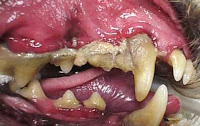 Once you identify that nasty doggie breath, you can be certain some degree of periodontal disease is present and dental intervention is needed. Statistics show that by 3 years of age 80-percent of dogs and cats already have periodontal disease. Don't forget that small and toy breeds of dog have accelerated dental problems diagnosed as young as 1 to 2 years of age.
Once you identify that nasty doggie breath, you can be certain some degree of periodontal disease is present and dental intervention is needed. Statistics show that by 3 years of age 80-percent of dogs and cats already have periodontal disease. Don't forget that small and toy breeds of dog have accelerated dental problems diagnosed as young as 1 to 2 years of age.
Think prevention - have your dog's teeth cleaned and embrace home dental care steps. And the next time you find yourself in a cloud of canine halitosis, you won't turn the other way - you'll grab that toothbrush.
Featured veterinarian known as "Dr. Debbie" on national pet radio program, Animal Radio. Ebook author of "Yorkshire Terriers: How to Be Your Dog's Best Friend"; "Pugs: How to Be Your Dog's Best Friend"; "Mini Schnauzers: How to Be Your Dog's Best Friend"; and "Shih Tzu: How to Be Your Dog's Best Friend." Dr. Debbie's books.
Visit Website
Animal Radio News - Tammy Trujillo
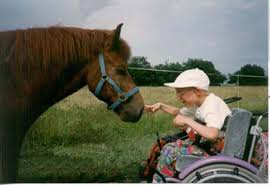 Alzheimer's Equine Therapy
Alzheimer's Equine Therapy
We had a story previously about how a family dog was helping an elderly man with dementia. But a study done at Ohio State University said horses, or equine therapy, could help adults with Alzheimer's too. People with the disease often experience personality changes that include becoming depressed, withdrawn or aggressive. But researchers found that clients from an adult day care center who spent time grooming, feeding and walking horses were less likely to be difficult to care for, or become upset later in the day. Seniors who were normally withdrawn laughed, smiled and talked to the therapy horses. People who never wanted to even try to get out of their wheelchairs, asked for help to stand up so they could get closer to the animals.
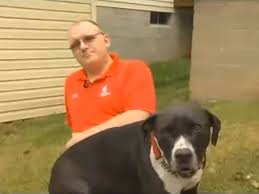 Dog Dialed 911 on Cell
Dog Dialed 911 on Cell
If there is still anyone out there who doubts that animals learn from watching us, well, a Marine in Ohio may beg to differ with you. Terry McGlade served two tours of duty, one in Iraq and one in Afghanistan. He was seriously wounded by a roadside bomb and now copes with seizures and PTSD. McGlade had a service dog named Major. Unfortunately, McGlade had a severe seizure and collapsed. Major actually got McGlade's cellphone out of his pocket and stepped on the screen for a few seconds. The phone was automatically set up to call 911. McGlade spent one night in the hospital and credits Major with being a hero who probably saved his life.
 Animal Cruelty Charges Against
Animal Cruelty Charges Against
The story of the vet in Fort Worth, Texas who was charged with keeping several dogs alive who were supposed to be euthanized so they could be used as blood donors is unbelievable. The Camp Bowie Animal Clinic was shut down while Dr. Lou Tierce was being investigated for animal cruelty and faced a $1-million dollar lawsuit from the family of Sid, the 5-year-old Leonburger, who was discovered being kept alive at the clinic six months after the family brought him in and was advised by Tierce that he should be euthanized. Sid was reportedly kept in a small kennel 24/7 to the point that he developed some serious orthopedic problems. Two other dogs were being kept for the same purpose, with one that had been kept for nearly three years. But it turned out the animal cruelty charge really centered around the condition of Tierce's own border collie who was found lying in a box in the clinic when authorities came in. The dog was in obvious pain and missing a leg. The other leg and both shoulders were dislocated and there were other issues that were just too horrific to go into. Tierce admitted that he had been giving the dog food and water but no medical attention. One vet tech said the dog had been like that since she started working there almost a year prior.
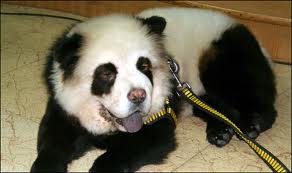 There Was Panda-Monium in China
There Was Panda-Monium in China
There was panda-monium in pet shops all over China. Dogs that looked like the country's prized pandas were all the rage. Panda dogs were introduced years ago at the Pet Fair Asia and they caught on in a big way. They're not an actual breed. Most were Chows who had been cut, clipped and dyed to look like a panda. For a smaller version, Bichon Frise's seemed to fit the bill. It takes about two hours to turn a dog into a panda and the look will last for about six weeks before it is time for a touch up. Panda dogs quickly became a sign of wealth and status.
 IKEA Helped Homeless Animals In Showrooms
IKEA Helped Homeless Animals In Showrooms
There are all kinds of unique ideas popping up to help homeless animals and here's one from Singapore. The showrooms of two IKEA stores featured life-sized cardboard cutouts of shelter dogs available for adoption. Shoppers interested in the dogs could scan their unique QR codes to learn more about them. The initiative was launched by agency DDB Singapore in collaboration with local animal shelters, Save Our Street Dogs and Animal Lovers League.
 Listen to the entire Podcast of this show (#1285)
Listen to the entire Podcast of this show (#1285)





